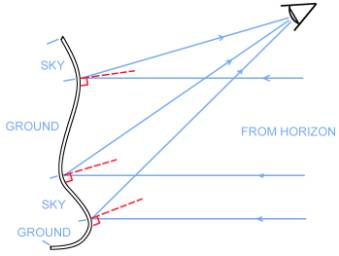|
|
|
|
| Seeing Organic Form |
Seeing Organic Form One of the principles that designers have observed over the years is that we don't really see form, what we see is the way in which form manipulates light before it is reflected back into our eyes. This may seem like an esoteric piece of semantics, but embracing it is fundamental to understanding how to manipulate the graphic nature of three-dimensional form. This means how to properly illustrate it, yes, but also how to truly design it with control over how it will appear from various angles and in different lighting. Designing surface is really about designing highlights and reflections. Shiny or metallic surfaces reflect differently as you observe them from different angles. It is the movement of reflections and highlights across those surfaces that describes to our eye the forms they are enveloping. What's more, subtleties of surface curvature can drastically affect how and where a reflection or highlight falls, as well as the speed at which it crosses a given area of surface when either our eye, or the object, or whatever is being reflected is moving. This significantly alters our perception of the underlying shape. Differences in surface properties also affect our perception of form, as does color. Metallic surfaces will gather diffuse highlights anywhere where a surface is 'bending' or changing direction, lending graphic strength to the intersections of surfaces. As well, they tend to get 'toned' by the colors around them, allowing contrasts of warm and cool colors to indicate the direction of surfaces. Glossy materials will pick up distinct reflections which can delineate the cross-section of a form through the way they fall and the degree to which they are distorted by the surface. All of these are thankfully governed by observable physical principles which, when understood, can be applied to our rendering. Understanding how surface manipulates light can begin by observing the simple cylinder. By simplifying to an object with curvature in a single direction, one can isolate the different effects of horizontal and vertical curvature, and then extrapolate the results on any compound surface with a greater degree of understanding. Let's start out by looking at the physics of it. Light reflects off of a flat surface at an angle exactly opposite to the angle it came in at. Seen another way, it is "mirrored" across the axis of a line perpendicular to the surface, otherwise known as the surface normal. To figure out where a reflection will fall on this surface, you mentally trace the path between the source of the reflection and the "eye", ensuring that the path passes through the proper angle of reflection on the surface. That point is where the reflection will be seen on the surface. The same is true of highlights, tracing the path from the light source, through reflection, to the eye. |
|
|
|
|
|
|
|
|
 |
| Plotting the 'Horizon Line' on a complex form |
| > Seeing Organic Form Continued... |
 |